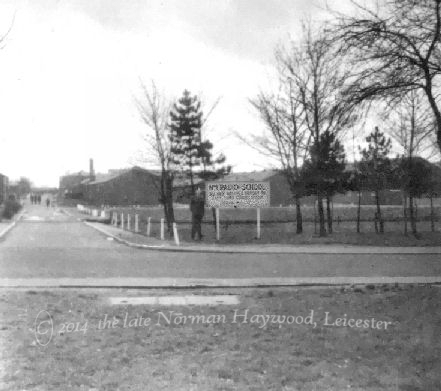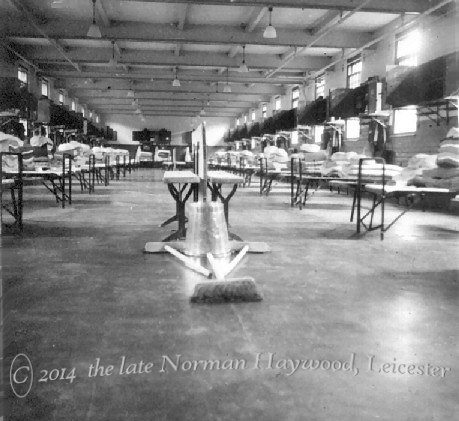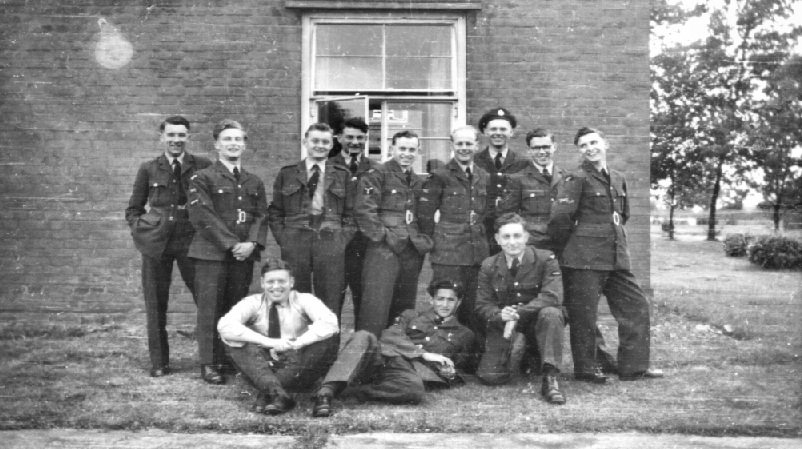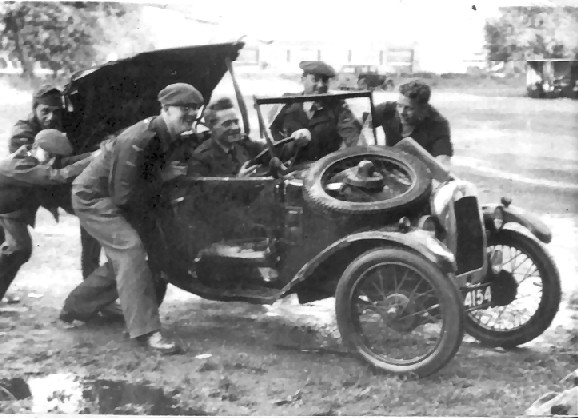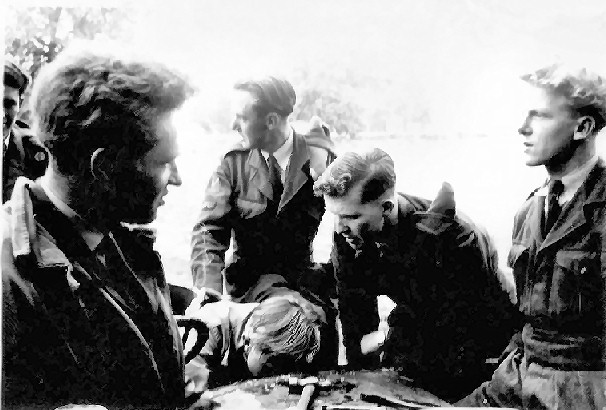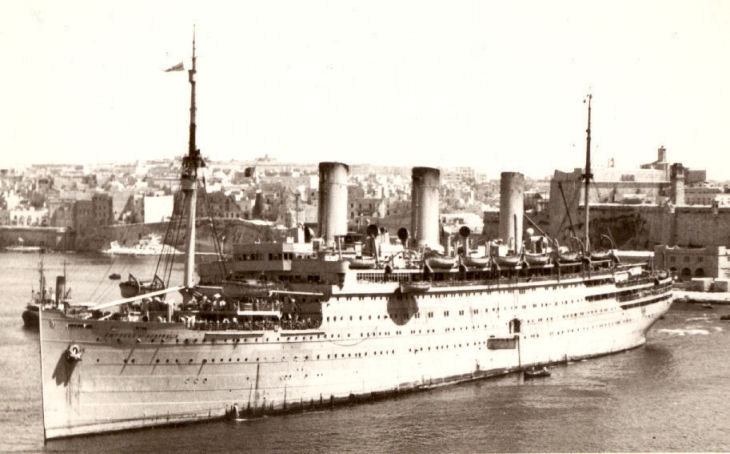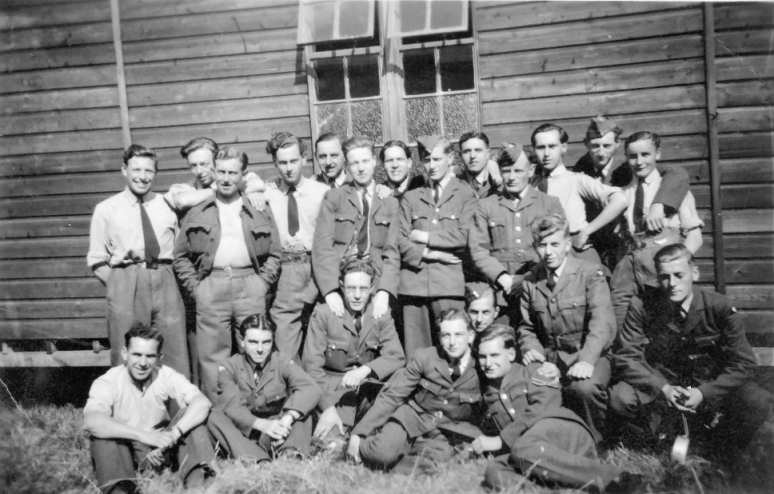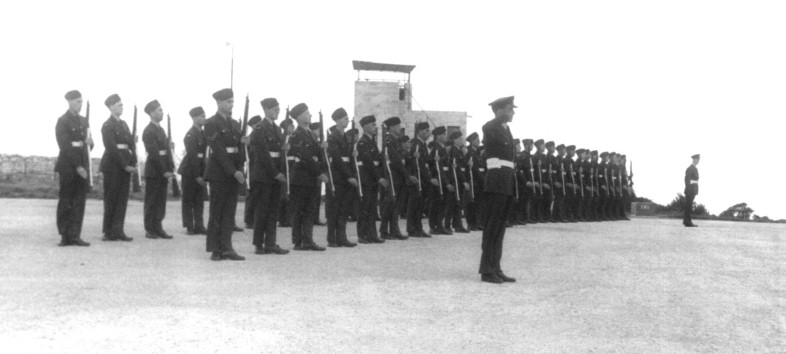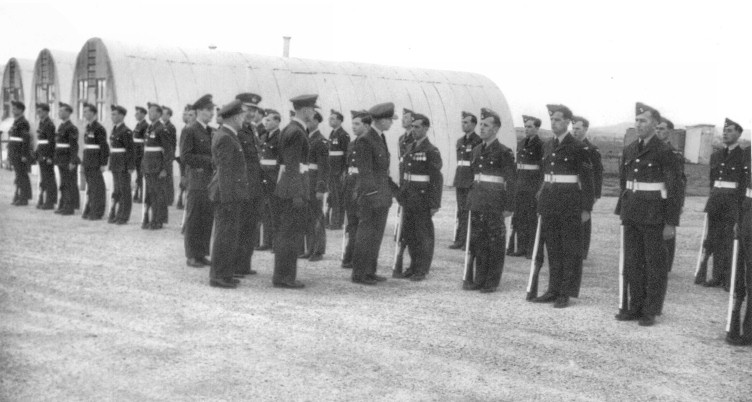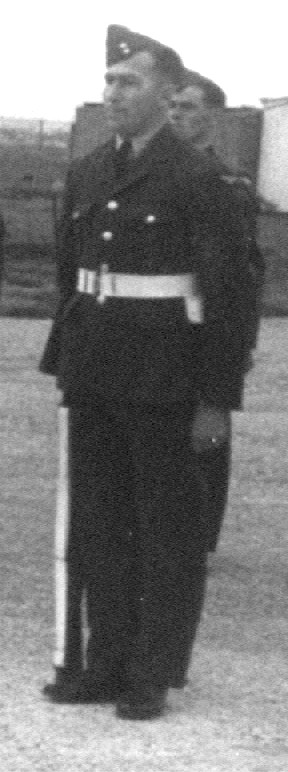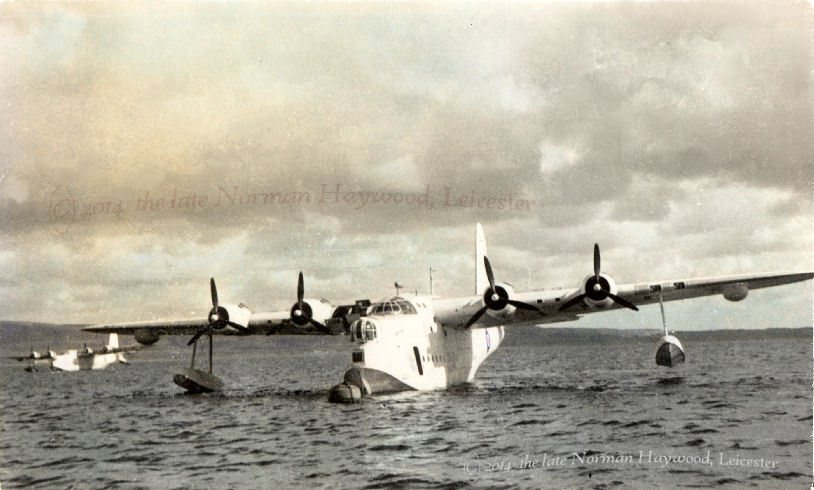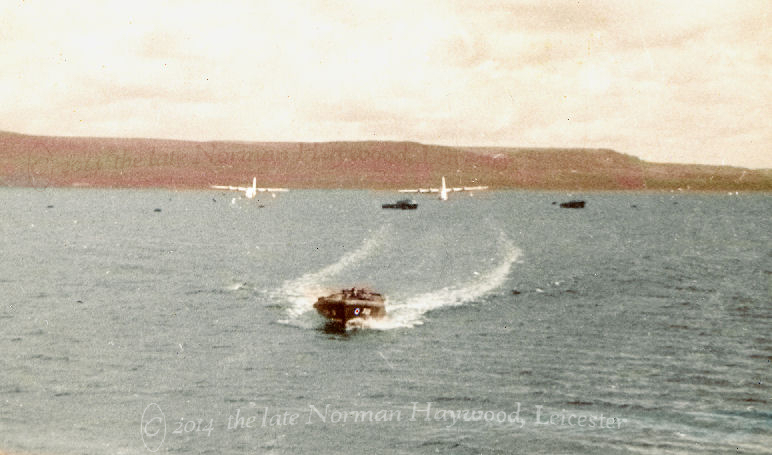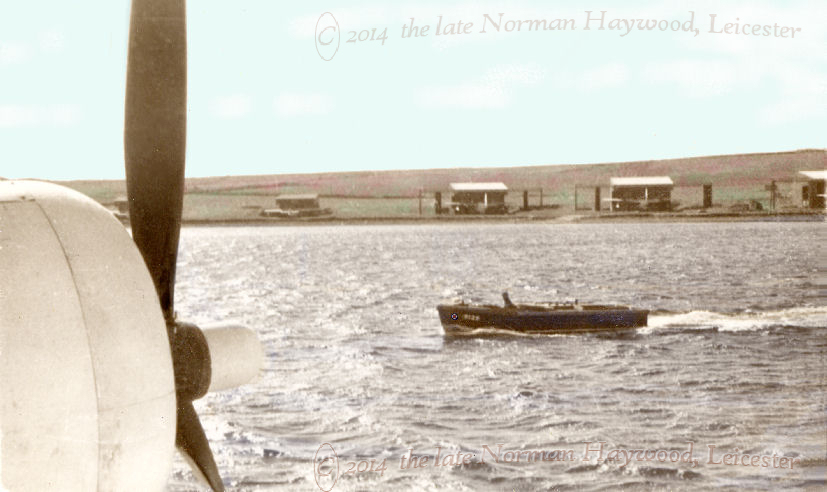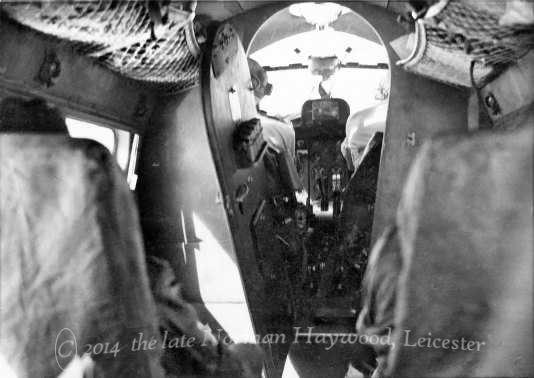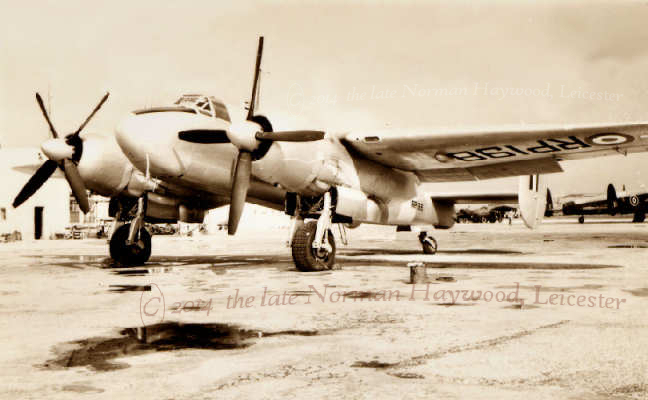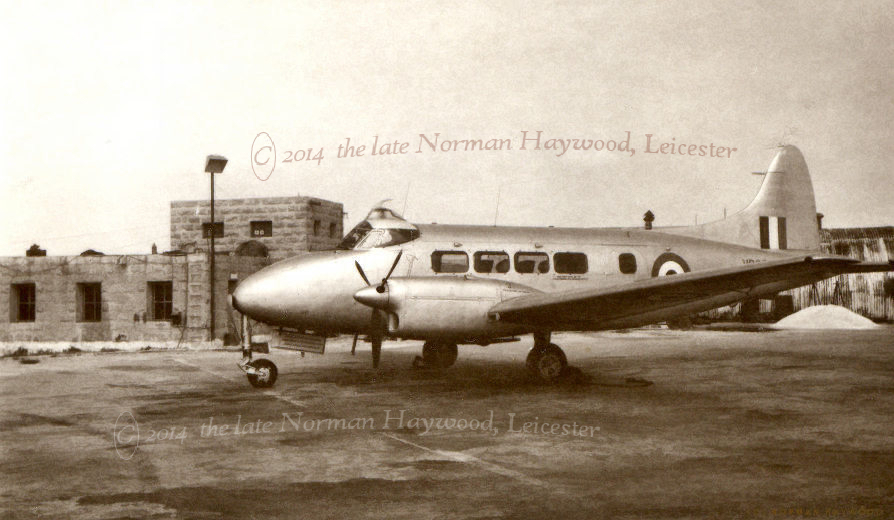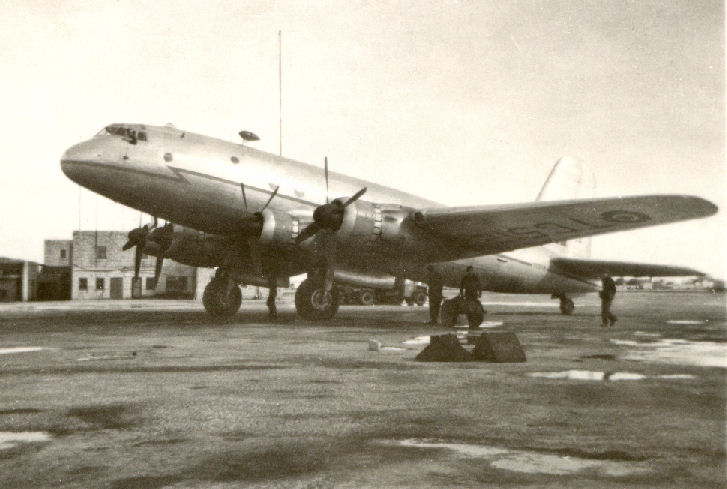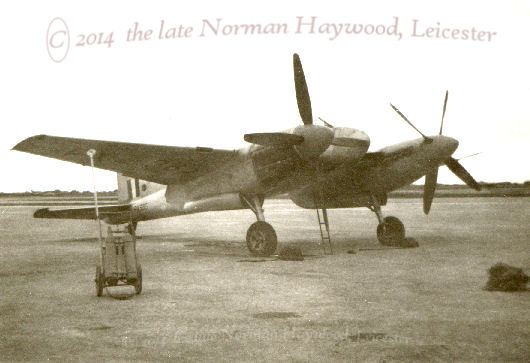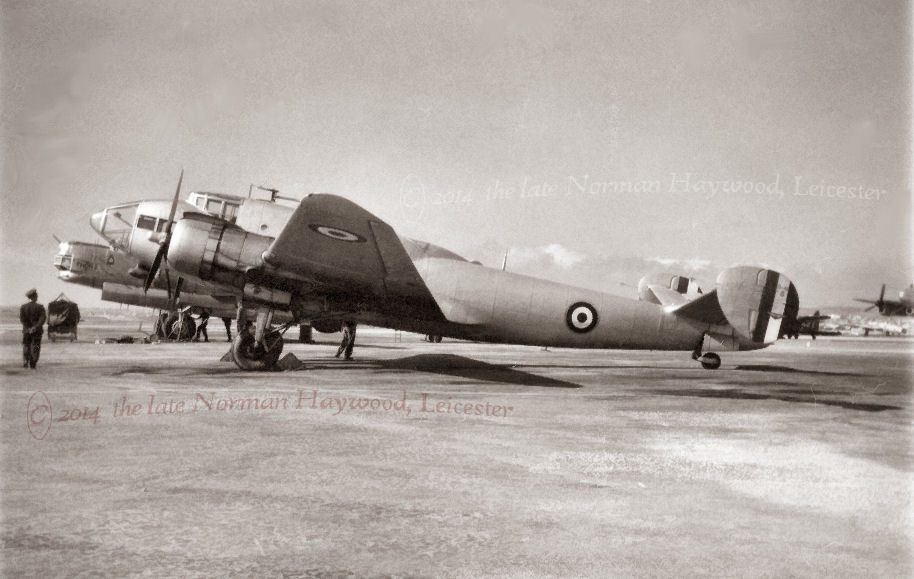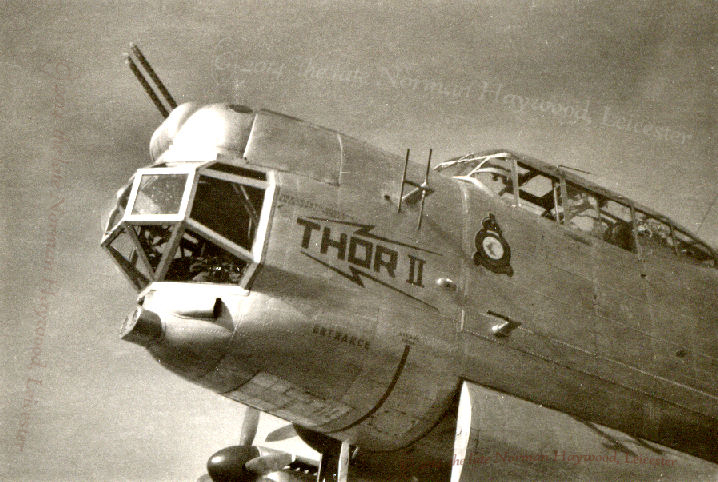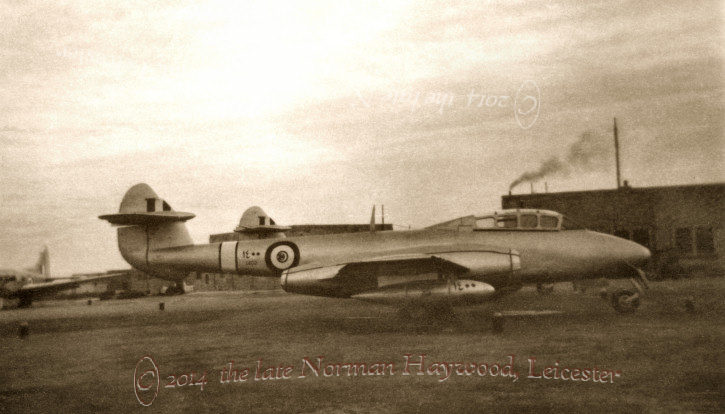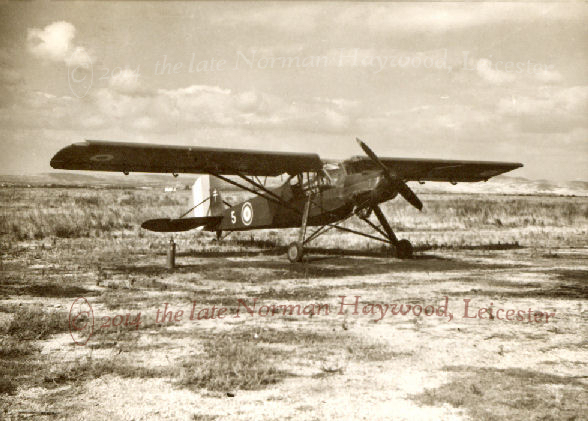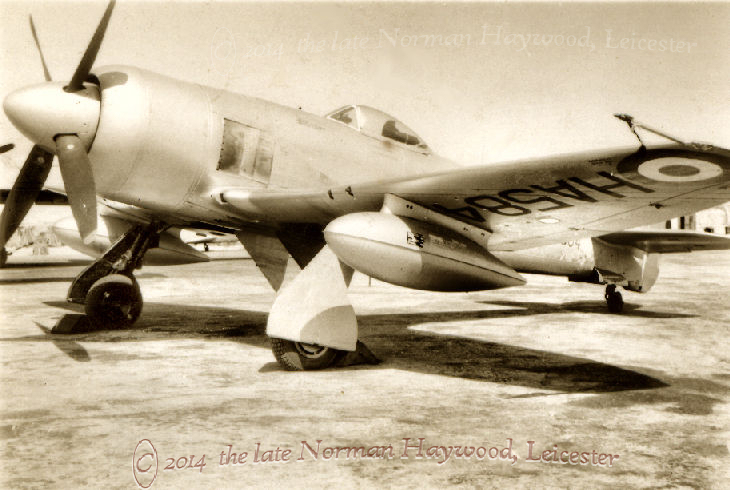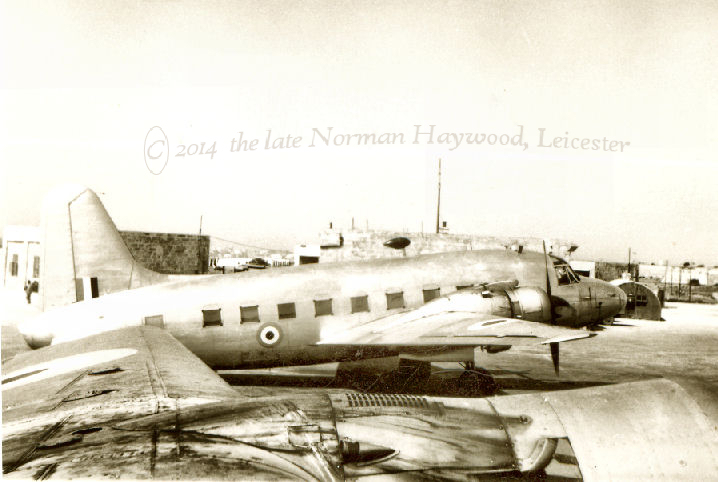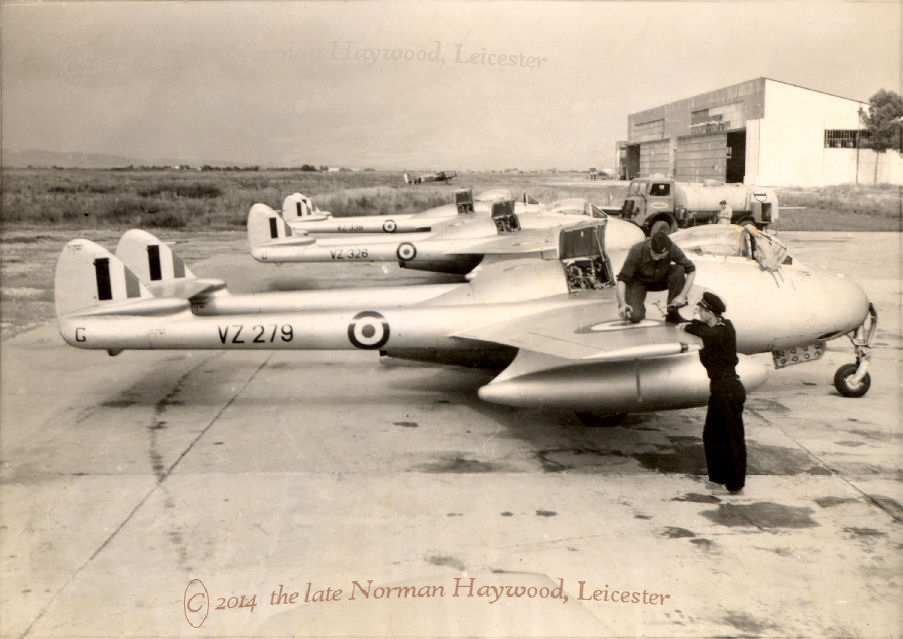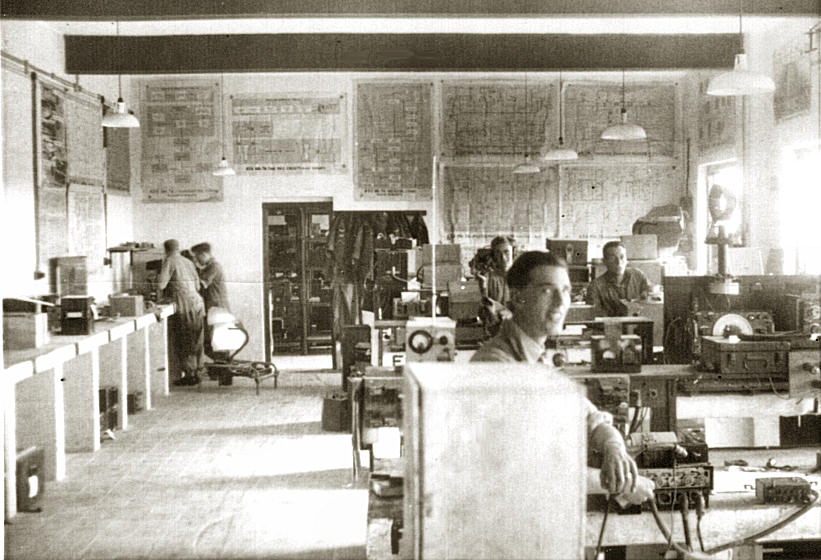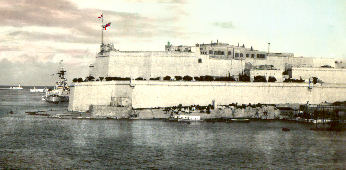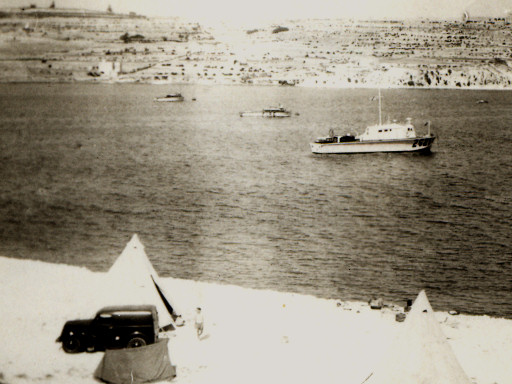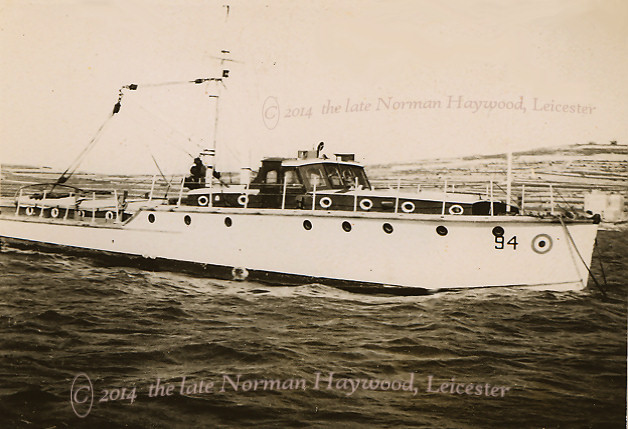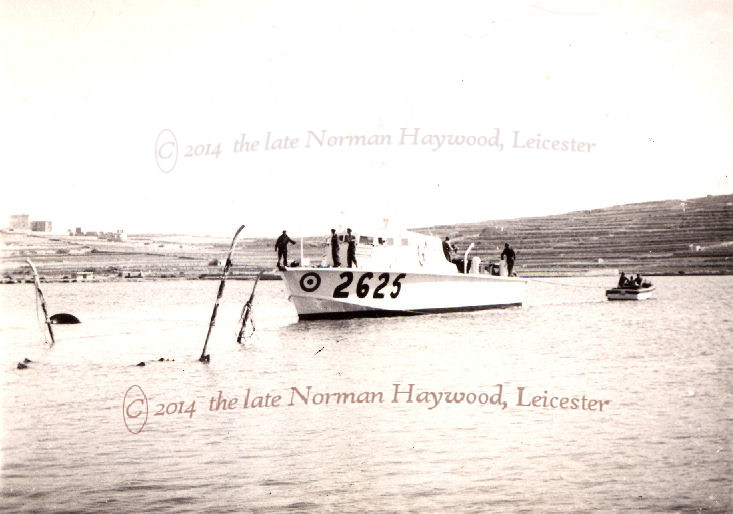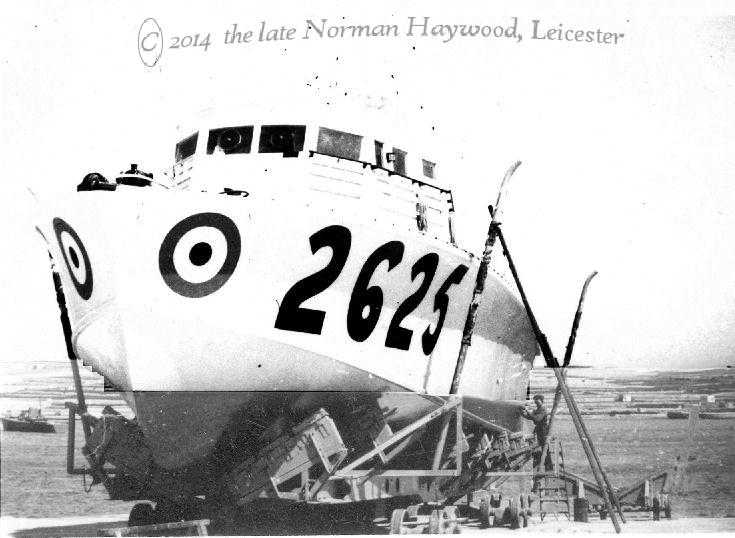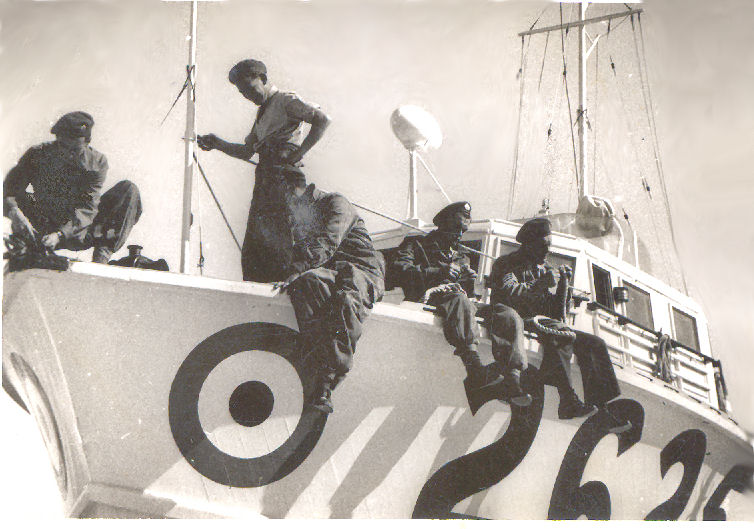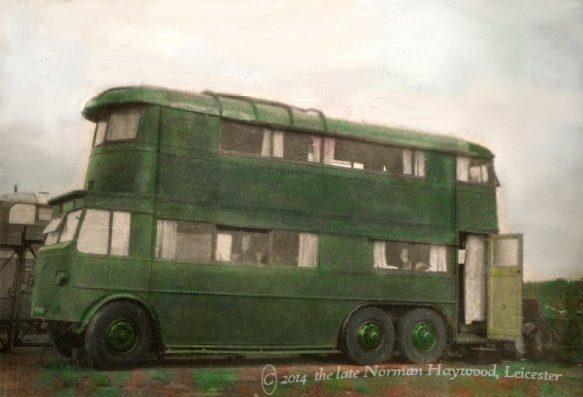
Of
course, there were planes here ... it's
just that dad seems to have run
out of film when he got back from Malta.
More likely, times were hard.
I mean, really hard. I remember this old
trolleybus so very well. It was parked,
along with several others (indeed, another
bus can be seen on the left
in the next compound) down in one corner
of the camp. I get the
impression that one compound was for the
caravans, homes, etc, of
NCO's, and another for ordinary airmen !
When dad was promoted
corporal, mum was forbidden to mix with
her former friends, for she was
now an NCO's wife, whereas her friends,
well, they were only 'airmen's wives'.
There was a most definite divide in the
social intermixing, or lack of in this
case, between officers, the NCOs, and 'the
men'. The
snobbishness of our armed services then
was unbelievable.
Married quarters in 1953 were still almost
non-existant, and so the RAF
allowed their airmen to provide their own
mobile home, and the RAF would site
it for them. There was mains water, and
electricity all provided, but that was
about
it. Rough cinder paths connected the
various vehicles to the main
compound gate. I think we were locked in
at night!
Dad and grandad had acquired this beast
from a dealer in Ipswich, and as
far as I know, it was more or less already
fitted out. Mum always
maintained it was an ex-London Transport
trolleybus ... but I have
found out since it was an ex-Bradford 1928
Karrier trolleybus, and a
very distressed, mucky green as I recall
it. But it had been new to Newcastle
Corporation's trolleybus system, one of
ten of its type, and later sold on to
Bradford. Maybe it suited the RAF that it
was painted green, as a sort of camouflage
in order not to frighten the enemy, or
even that the RAF insisted it was painted
green. But there were also whitish
caravans and other buses in other colours
on site, and the fact that green seemed to
be its original colour did eventually lead
to a positive ID as to its northern
origins. It was withdrawn from service in
Bradford in around 1948.
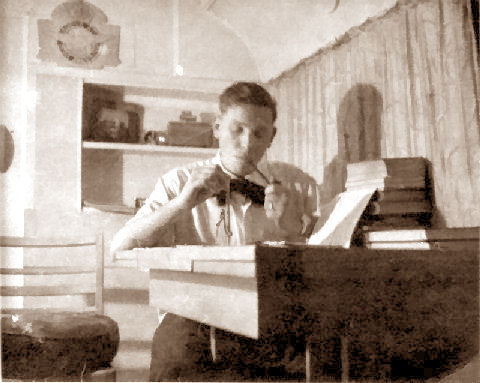 Naturally,
all the original bus seats were removed,
making it quite
spacious inside. Even so, it would still
have only been the then
regulation 7' 6" wide. Eight footers
weren't allowed until well after
the war. The downstairs saloon became the
living-cum-dining room, and a
kitchen with sink and worktop, cupboards,
etc, were over the twin rear
axles where the long sideways seats would
have been. The dog, an
alsation ex-RAF guard dog, slept in a
large basket under the stairs.
Dad is pictured here burning the midnight
oil at the dining table, no doubt studying
for
his next qualification, compass in hand as
he chewed on his pipe. The
only clue that this may just be the inside
of a bus is the curve of the
roof. Those shelves are in fact built into
the blocked up window of the back of
the driver's cab. Note the RAF fretwork
crest on the bulkhead. I've no idea where
he got that - possibly Malta - or where it
went. I saw it for the last time hanging
up in an outside loo of our terraced house
in Leicester! Naturally,
all the original bus seats were removed,
making it quite
spacious inside. Even so, it would still
have only been the then
regulation 7' 6" wide. Eight footers
weren't allowed until well after
the war. The downstairs saloon became the
living-cum-dining room, and a
kitchen with sink and worktop, cupboards,
etc, were over the twin rear
axles where the long sideways seats would
have been. The dog, an
alsation ex-RAF guard dog, slept in a
large basket under the stairs.
Dad is pictured here burning the midnight
oil at the dining table, no doubt studying
for
his next qualification, compass in hand as
he chewed on his pipe. The
only clue that this may just be the inside
of a bus is the curve of the
roof. Those shelves are in fact built into
the blocked up window of the back of
the driver's cab. Note the RAF fretwork
crest on the bulkhead. I've no idea where
he got that - possibly Malta - or where it
went. I saw it for the last time hanging
up in an outside loo of our terraced house
in Leicester!
A
large water tank lay across what had been
the rear parcel shelf
immediately over the top of the stairs,
and where the back seats had
been, we had a bath ! Then came my
bedroom, and the front upstairs saloon was
sectioned off to make my parents bedroom,
with all the unnecessary
windows blanked out. At the side of the
full-cab downstairs, where the
electric trolleybus motor would have been,
was the toilet, the door of which is
just behind that chair. The loo was
probably of the Elsan variety, used on
bombers and transport aircraft.
Emptied on Mondays. Pheew!
When dad was posted to Wellesbourne, there
were no married quarters
there to be had either, so the RAF towed
this bus over there for him,
by a succession of wierd and wonderful
utility vehicles that I only have a
vague memory of now, tractors, petrol
bowsers, etc. The journey I do
remember, mainly on account of the trouble
I got into. I was 3
years-old, and didn't understand the
seriousness of the law that said
passengers must not be carried in any
towed vehicle. And of course, how
else was dad to get mum and myself some
150 miles cross-country over to
Warwickshire from Norfolk. Dad rode in the
truck, or tractor towing our old bus with
his
mates. We rode inside the bus, naturally.
Along with the dog. Keeping very
quiet, and not daring to even peep out of
the curtained windows.
That is, until we got stuck under a
low-arch railway bridge somewhere in or
near
the middle of Wellingborough or Kettering
or suchlike. I know it was
the centre of a small town, and the bus
fastened itself to the
brickwork by way of it still having the
original trolley girders
attached to the roof, seen in the photo.
The poles had been removed,
but the girders left in situ, making the
bus two or three inches higher
than a normal double-decker.
This arched bridge was one of those where
a high vehicle could just
clear it by taking the middle of the road.
But this one didn't clear
it. And it was a mainline to somewhere, a
good four tracks or so,
almost an arched brick tunnel. So here we
were, being towed by either an RAF petrol
tanker or a tractor or something, and we
came to a grinding, screeching
halt. The traffic backed up, and no doubt
a few horns were pressed and
curses aimed at the poor, luckless airmen
assigned to tow this thing.
And now, it wouldn't go forward, and it
wouldn't back out. We were
truly fast. Mum, who was already expecting
her second child, was
frantic and couldn't do anything, but keep
out of sight.
The dog was frantic too, and I must have
misunderstood her whining and
scratching and clawing at the back door
for the need to pee .. I had already been
trained to react that when the dog whined
or scratched at the door, let her out. So
I let
her out. Whereupon, tasting a wierd
freedom, she bounded off up
someone's high street, no doubt scenting
her long awaited German or
Soviet prey to which she had been trained
to kill on sight, and disappeared. And to
the
consternation of pater, whose windmilling
arms were trying to direct
traffic along with several policemen that
had arrived, as they all
pondered how to get this damned thing
free. People were much more
patient in 1953. But even so, I think it
was at that point, 3 years or
not, that I knew I was forritt. RAF
discipline was tough on a child back then.
In the end, the police must have either
turned a blind eye to this
minor offence, or told dad he would be
reported to his CO. I don't
suppose the police had a form for it. And
I don't think there was a
nasty outcome, other than I got a
walloping for letting the bloody
pooch out and embarrassing him in the
first place.
We did recover the dog, eventually. And
the bus, oh yes. Well, that was
released from custody by the simple
expedient of letting her tyres
down. Mum reckoned it was propelled out by
the vibration when a London
express thundered over the top of us. I'd
love to have had a video of
the scene.
Still, we went on our lumbering way to
Warwickshire, and one day not so long
after, mum came home
by herself in a taxi from hospital in
Leamington with my new baby
brother, all wrapped up in a flowing
shawl, one bitterly cold winter's
day in late February of 1954. I sat in our
one wooden-arm easy chairs inside
our bus and held him very carefully in my
little arms. For my brother
Jeffrey, his first home was a freezing
trolleybus parked in the middle of
nowhere, taking our tiny part in the
defence of the realm. And he has
no recollection of it whatsoever.
SERVICE RECORDS - the whys and
wherefores
Update: March 2017
After years of pontificating about it, we
finally sent off the forms for dad's
service record. For the price of £30, they
would have been cheap at twice the price.
It is true that they didn't tell us a lot
of things I had been hoping for, such as
home addresses and particularly on Malta,
or even a photo. But by and large, a
service record of a man enlisting in 1946
to 1956 was essentially the same format
and similarly sparse information as a man
in wartime. I'm no expert on deciphering
MOD records, so the help of the internet,
using Google to do endless searches to
find the true meaning of acronyms, was an
absolute gift. Even though the RAF Records
Department did also supply a 3-page list
of acronyms, without the help of the
internet, it would have been impossible,
and that is even given the fact that I
already knew a great deal because dad told
me so much himself. Even so, 20 years
after his passing, I still got things
wrong, or the wrong way round -- ie,
training at Yatesbury came before
further training at Cranwell. All RAF
airmen in the wireless trades could have
told me that, of course.
We have, more or less, got to the bottom
of what most of it means. A lot of details
we thought we knew were confirmed, and
some were slightly changed. There are lots
of numbers, strokes and undecipherable
symbols that refer to RAF service forms,
so when the records clerk entered a detail
on one line of a man's record, he would
also enter the number of the form that he
took the details from. At that time,
everything was cross-referenced and
cross-checked. All over the empire, in
camp offices, adjutants' offices and
aboard warships, clerks of all services
were filling in millions of forms, all
numbered in their particularly bureucratic
way, and returning them to their
regimental HQ, naval bases and RAF HQs.
Even more endless clerks were compiling
those into typed returns for filing away,
to one day find their way into our
National Archives.
The man who filled in, with a proper ink
pen no less, our dad's and everyone else's
records, would not have known him. Dad was
just a name, a number, and what was filled
in made every sense to the officers in
charge of all this mountainous admin. So
for the most part, it is initials and
numbers, with very little in what we would
call 'plain English'. Placenames are
frequently ommitted, actual places denoted
by squadron or regimental and battalion
numbers. Of all the places dad went to in
that 10 years of service, it only mentions
three by name, and I already knew of
those. The only mention of Malta is when
he was leaving it, along with the number
204 which I later found out was the
squadron number of the air-sea resue unit
where he serviced wireless sets on those
ASR launches pictured above, down at RAF
Kalafana. It does all take some sorting
out.
IF YOU NEED HELP FIGURING YOUR RECORDS
OUT ... - - - ... ... - - - ... ...
- - - ...
If anyone reading this have records of
their own serviceman and are having
difficulty deciphering them, I can help.
If you scan them, or the relevant parts,
and email them to me, I'll see what I can
do. I've done lots of WW1 army records, my
own father-in-law's WW2 Royal Marine
records, and many naval records with names
of ships and shorebases, as well as dad's
RAF records -- the first of that service I
have dealt with. At least you could give
me a try before you send them off to an
expensive official historian perhaps only
to find out the names of some official
forms that mean nothing to you anyway, and
pay a lot for it. At least I could perhaps
recognise certain features that are common
to most service records. It took me a long
while to twig on that the bracketted
letters on the line where the D.Malta
(T.Ex.) appears stands for 'Time Expired'.
Of course it was! He'd done his two years.
And the 'D' was just an erk's abbreviation
for 'departed'. It starts to make sense if
you stare at them long enough ... roughly
about three weeks!
As I say, I'm no expert. There were
several other mysteries that we eventually
got to the bottom of, but here's a lesson
to the unwary, for there's one anomaly
even I can't solve, and will need the help
of someone who was there, who knows the
facts. What I do know for a fact is that
for some time, we were at RAF Wellesbourne
Mountford, in Warwickshire. I was only
about 3 years old, but the thing that
nails it for certain is that, as mentioned
above, my little brother was born at
Leamington hospital a few miles away. Mum
spoke of it, so did dad. But dad's record
makes no mention of it. On the line after
RAF Watton, his previous posting, and
before the line of RAF Spitalgate where he
went next, it simply says 9 FTS ... then
added to that is 9 AFTS. They are Advanced
Flying Training Schools, and schools of
varying numbers for training pilots were
dotted all around the country. All I can
find on Google is that 9FTS was based at
.. .. .. RAF Shrewsbury, miles and miles
away to the west, the other side of
Birmingham. By early 1954, when I know we
were at Wellesbourne, that base had ceased
to be the operational bomber base it had
formerly been. What was there was an RAF
photographic unit, doing photo
recconaisance, and a maintenance unit,
plus some other smaller units on the edge
of RAF administration. No mention of a
FTS. Perhaps the Google record is out of
date. Perhaps someone else knows the
facts.
I suspect it's a case of his record being
not updated with an amended posting, in
the way that his Suez Zone posting was.
I'm also guessing that he was originally
posted to 9FTS at Shrewsbury, but I recall
him saying that after Watton, he tried to
get a posting that was nearer to Leicester
for better ease at getting to see family.
That's why the RAF were willing to tow our
double-deck caravan halfway across middle
England, to this new posting. Maybe that's
what happened, he was simply given
Wellesbourne instead, before he even left
Watton, and never went to Shrewsbury at
all, but only to the Maintenance or
Photographic unit at Wellesbourne. Which,
as I recall him saying, wasn't all that
close, but considering RAF airfields in
Leicestershire were far and few between,
it was about the best he could hope for -
and a lot closer than Shrewsbury.
Eventually, he got a married quarter at
Spitalgate, and saw his time out there.
I'll probably never know the answer to
that record anomaly. We can only find out
so much, but believe me, there is usually
much to find. But, if I can help you with
yours, I'd give it a go . . . .
|
 Dad's
RAF photos from the 1940s - 50s
Dad's
RAF photos from the 1940s - 50s
